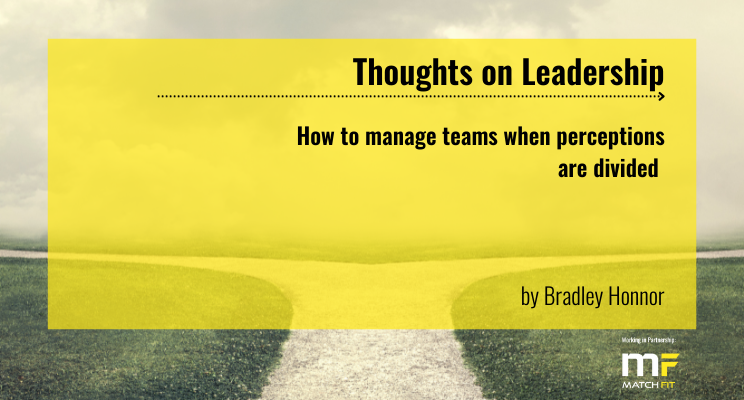One of the key themes that emerged from our recent interview with MatchFit consultant Alison Phelan was how much divergence of opinion there could be within a team during the initial research and analysis phase of a MatchFit programme. Whether it’s thoughts on the culture; day-to-day experiences; or leadership, there are often wide-ranging opinions.

Even within the individual there can be conflict – a person might absolutely love their job, and yet still have strong criticisms about things that they perceive to be going wrong.
This is actually fairly typical and illustrates just how complex company culture can be. It’s also why the phenomenological element is really important, because we can all experience a culture completely differently from one another, and even that is fluid.
“Do you like your job” may seem like a binary question, but actually, it’s more complicated than that. There may be aspects of my job that I enjoy, and others I find challenging or frustrating. But that might also depend on my frame of mind at the time.
Within any team, there will be polarities and that’s why we look at group dynamics. Because it’s a dynamic, it moves and changes, and that’s OK. That phenomenological aspect addresses this by looking quite literally at the here and now. There are similarities with what I often found in my psychotherapy work: an individual could be really consumed by a particular issue one week, and yet by the next session it wasn’t as important anymore. This was either because something else had taken priority, they felt differently about it, or had worked it through.
So it’s really important to think about the sort of assumptions that we might make, how they would impact the conversations we have, and how this will steer those conversations and the types of questions we might ask. Part of the skill of the facilitators, when we move on from the analysis phase, is to navigate those ever-changing dynamics for the individual and group. We look at how the individual can move towards having more of those components that they’re satisfied with, more often, and then how the team can unify themselves with a shared direction and joint objectives. We also have to appreciate that this is not always going to be cohesive, comfortable and positive for everyone all the time. That’s the definition of dynamic.

The first thing a leader needs to do to help address some of these issues is to recognise individual experience, and not make assumptions about how someone should be experiencing the culture, and therefore categorising people into groups. The most effective way to get to the bottom of what’s happening is by listening to the experiences people are having, but not asking leading questions to direct those conversations.
For example, in designing in a survey for a certain programme, we were asked why we hadn’t referred to a certain category of people and their experiences specifically. This was interesting, because there were many different identities of people that we weren’t asking about. Our response was that if those employees were experiencing the culture in a negative way specifically because of membership of that category, then this would be emerging organically, without bias, in the conversations.
Ultimately, it’s all about ‘how do you impact on the individual experience of people, their interpretation of their environment and culture, and how do you then collectively deliver across teams to try and unify people’s working alliances?’.
That isn’t really happening as much as I believe it should.

